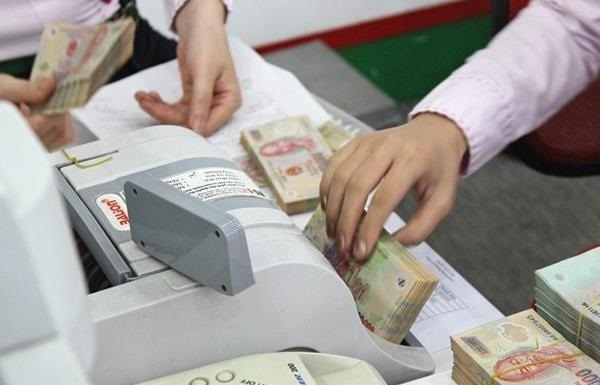Gaping holes in MoF tax proposal
VAT is an effective mechanism for generating revenue for the national budget. A decade ago, VAT accounted for 25 per cent of the total tax revenue, 21 per cent of the total state budget revenue and grants, and 5.6 per cent of the GDP. As of 2016, VAT made up 33 per cent of the tax revenue, 24 per cent of the total state budget and grants, and 5.8 per cent of the GDP.
According to MoF, the ratio of VAT revenues in Vietnam is very high compared to OECD countries. In these countries, VAT accounts for around 20 per cent of total tax revenues on average, with Japan having the lowest VAT revenue ratio of 12 per cent and Chile the highest ratio of over 40 per cent.
Foundations for tax reform
A proposal for tax reform requires a comprehensive and thorough assessment, with focus on three main aspects: economic efficiency, social equity, and administrative feasibility. However, MoF’s proposal is not based on such a study.
First, regarding economic efficiency, increased VAT will reduce people’s available income, effectively reducing demand in the economy. With this year’s economic growth target of 6.7 per cent still seeming hard to reach, the appropriate measure would be a countercyclical fiscal policy, reducing taxes and increasing spending. However, MoF’s proposal goes in the opposite direction, which will increase the price level, reduce profit, and place further burdens on the recovery of businesses.
An effective tax policy usually needs to minimise the excess burden of taxation, or deadweight cost, which is propotional to the square value of the tax rate. As such, tax reforms usually expand the tax base or reduce the tax rate, since increasing the rate will also increase economic costs and create unnecessary losses to the economy.
Tax reform, as a means of increasing economic efficiency, will also increase the competitive power of the economy in the context of economic integration. Under normal conditions, developing economies are unlikely to possess the same competitive factors as developed counterparts, thus an attractive tax rate is a viable way to create a competitive advantage for a developing country. Without this tax advantage, it would be even more difficult for Vietnamese businesses to face foreign competition as they are still lacking many competitive factors.
The second issue is social equity. Consumption taxes, including VAT, are indirect taxes and usually affect the low and middle-income population more than the upper layers, since people with lower income typically spend a larger proportion of their income on consumer goods. An effective tax reform would usually follow vertical equity and leaning toward direct taxes instead of indirect taxes, contrary to MoF’s proposal.
The burden of consumption tax is also shared between consumers and buyers depending on the price elasticity of demand for particular goods. If the proposal goes through, consumers would have to bear higher tax burdens on less elastic goods, which include necessity goods, healthcare, and education. The MoF proposal will place a heavy burden on the low and middle-income population and further diminish social equity instead of improving it, as the ministry argued.
 |
| An increase in VAT rate will affect the whole Vietnamese population |
Finally, on tax administrative feasibility, the capabilities of administratve bodies have been a big problem in the implementation of VAT, with tax evasion and other forms of exploitation running rampant, creating huge losses in tax revenue. With more effective administration from MoF, the state could potentially gain a substantial increase in VAT revenues without the need to increase tax rates.
Unconvincing goals
MoF’s proposal seeks to achieve three main goals: to guarantee national financial security and stability, to apply uniform tax rates to ensure equality between sectors and industries, and to make Vietnamese tax practices consistent with international practices.
Regarding the first goal, maximising national budget revenues does not necessarily mean national financial security. National finances would only be secure and stable when national revenue sources are secure, the business sector performs effectively with good competitive capability, and people’s living standards and welfare are well-protected.
Second, the tax disparity based on investment sources, such as the tax incentives for FDI businesses compared to domestic businesses, would cause much higher concerns for economic equity than the preferential taxes promoting certain industrial sectors or goods. Many OECD countries apply such preferential tax rates as well, so a uniform tax rate is not necessary.
Finally, on international tax practices, MoF's comparison of the tax systems of OECD countries and Vietnam was partial and inconclusive, since MoF only looked at the marginal tax rate and did not take into account the effective tax rate. While the nominal VAT rates in OECD countries are higher than in Vietnam, these countries have different tax declaration thresholds, such as €90,300 ($106,215) in France, or ¥10 million ($91,400) in Japan, which means the effective tax rates in these countries are not necessarily higher than in Vietnam.
It should also be noted that OECD countries have very good business environments with very low informal costs, while businesses in Vietnam have to shoulder extravagant informal costs in additional to tax burdens. Furthermore, several OECD countries have also maintained low VAT rates, such as Japan (8 per cent), Canada (5 per cent), Switzerland (8 per cent), and Australia (10 per cent).
In conclusion, it seems that the recent tax proposal by MoF is still undeveloped, with many flimsy arguments and unsatisfactory evidences, which can potentially cause serious economic and social damage if implemented without carreful reconsideration.
MoF needs a more comprehensive look at the wide-ranging impacts of the tax reform on Vietnam’s economic efficiency, social equity, and competitive power to create a better proposal and improve its own administrative capacity at managing taxes in general and VAT in particular.
What the stars mean:
★ Poor ★ ★ Promising ★★★ Good ★★★★ Very good ★★★★★ Exceptional
Latest News
More News
- Vietnam’s capital market set to diversify in 2025 (January 04, 2025 | 08:00)
- Digital assets now indispensable choice (January 03, 2025 | 18:00)
- Banks expedite massive bond issuances to raise capital before new year (January 03, 2025 | 16:56)
- Experts ponder exchange rate prospects for 2025 (January 03, 2025 | 16:54)
- Experts scrutinise various investment channels in 2025 (January 03, 2025 | 16:45)
- DFC to boost financial inclusion in Vietnam (January 03, 2025 | 16:22)
- Strategic policies towards 2025’s economic goals (January 03, 2025 | 15:22)
- Vietnam’s stand-out tax outlook (January 02, 2025 | 16:18)
- Banks deliver bright profit picture (January 01, 2025 | 10:00)
- Forecast upbeat for banking industry in 2025 (December 27, 2024 | 16:22)















 Mobile Version
Mobile Version